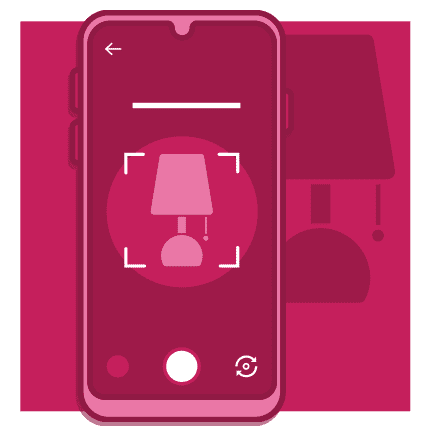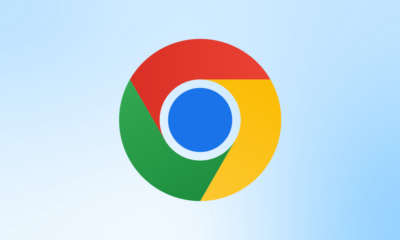PPC
How to Leverage Visual Search for e-Commerce Growth

Online shopping is booming as people become more comfortable buying online as opposed to in-store. It’s easy, comfortable, and convenient, with the possibility of finding a wider range of products at better prices.
As with everything in the digital space, online shopping is evolving, and visual search is the latest opportunity to increase sales, boost revenue, and grow your customer base. So let’s learn more about visual search and how to optimize content to maximize profits.
What is Visual Search?
Visual search is appropriately named as it involves users searching with an image, as opposed to a keyword.
The reasons why someone would do this come down to the following benefits:
- Visual search makes it easier when you don’t know what you are looking for
- It can help to match a particular style
- Your search query may be long and complicated, so an image simplifies things
Consider visual search as a targeted and user-friendly method that involves pointing a camera at something to find an exact match or something similar.
The Differences Between Image and Visual Search
They sound similar but are incredibly different. Image search requires you to type in a query in the search box, with image results returned based on your keyword; a method that people are very familiar with.
On the other hand, visual search requires an image or your Google Lens camera to search and return images that match or are similar. Voice, visual, and conversational search are improvements on typing search, all with the goal of making life easier for us all.
The Popular Visual Search Options
The Pinterest lens was the first social media platform to use visual search. In the Pinterest app, a new or existing photo can be used to complete the search. This has been extended to hybrid search, which uses the aesthetic of an existing pin to find similar items, and the “complete the look” feature, which can generate case-based recommendations to match an outfit or room layout and style.
Google Photos lets you use an existing image for a visual search with the ability to identify over 1 billion items. You can also scan your environment to search for things in reality or have Google identify and recommend items on a menu. Other popular features include the ability to translate text from print directly onto your phone, identify animals and plants, and historical facts about your location.
Snapchat camera allows you to search for products on Amazon by pointing it at a physical product or barcode. If recognized, an Amazon card will appear on-screen with a link to buy on Amazon.
Visual Search Issues
Before we dive into optimizing your store for visual search, it is important to be aware that this new innovation still needs some improvements. Lenses commonly auto-select the wrong focal point, categorize a person instead of a product, or display items that are out of stock.
It is vital to be aware of these pitfalls as they may cause you to lose some sales along with the trust of your customers. Optimizing your images correctly can help lower the risk of this, however.
How to Optimize for Visual Search
Optimization of all kinds is important, as emphasized in this e-commerce SEO case study. Visual search success comes down to optimizing your images. By doing this, you will hopefully avoid the visual search mistakes mentioned above. To optimize your images and truly leverage the benefits of visual search, do the following:
- Submit image sitemap to Google
Ensuring your images are indexed is the first step, and you do this by submitting image sitemaps. With basic product data from the shopping feed, visual search technology will be able to understand your content.
Sync from your site with the Google merchant center and Pinterest catalogs to keep product info updated, allow people to search by brand, and avoid penalties from Google.
Put your USPs in the product description (especially free shipping), as this can help you get the much sought-after click. With a relevant schema for all images and rich pins to your site, you reduce friction and potential frustration by eliminating out-of-stock items from the user’s feed.
- Standard image optimization
We know about optimizing site images for site speed and user experience, but they also help with visual search. One of the most important elements is image size. Keeping your image sizes under control helps your website load faster, which reduces user frustration, and much like personalized content which helps users understand the information they’re seeing is specific to their needs, it can be the defining factor when it comes to making or losing the sale.
Use appropriate, targeted, and descriptive file names for all of your images along with alt-tags, which means an alternative tag, a name that appears in place of an image if it fails to load. The alt-tag text is also read by search engines to help them understand the purpose of the picture. Be sure to use the most relevant alt-tag for the image, as this can impact your rankings and boost sales. An SEO booster can help with all of this!
While all of this sets your digital assets on the right path, we also recommend looking into having a local presence in the real world to reach customers in cities outside of your local area. By allowing them to call you when they have an issue (which you can do by providing a local phone number), you can increase customer satisfaction!
Making the Most of Your E-commerce Opportunities
As an e-commerce store owner or digital marketer, it is always important to be aware of the opportunities that arise in the digital space, like visual search. Utilize the emotions of your audience via social media and adapt your content to be attractive and relevant to improve discovery, engagement, and above all, sales.

















You must be logged in to post a comment Login